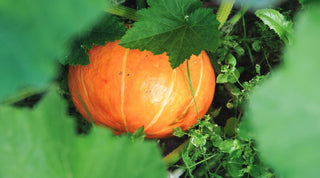Gardening enthusiasts and green thumbs alike, have you considered the magic of cover crops in your garden?
These unsung heroes play a pivotal role in enhancing soil health, preventing erosion, and improving the overall ecosystem of your garden space. This comprehensive guide will delve into the why, how, and when of planting cover crops, highlighting their myriad benefits for any garden.
Why Use Cover Crops?
Cover crops, also known as green manure, are primarily planted not to be harvested but to enrich soil quality. They offer several advantages:
-
Soil Health Improvement: Cover crops enhance soil structure and organic matter, leading to better water retention and aeration.
-
Erosion Control: They protect the soil from erosion by wind and water.
-
Weed Suppression: Their growth suppresses weeds by out-competing them for nutrients and light.
-
Pest and Disease Management: Certain cover crops can reduce pest populations and suppress soil-borne diseases.
- Nutrient Cycling: They play a crucial role in the cycling of nutrients, particularly nitrogen, back into the soil.
Types of Cover Crops
Understanding the different types of cover crops is key to choosing the right one for your garden:
-
Legumes: Such as clover, vetch, and field peas. These are excellent nitrogen-fixers, enriching the soil with this crucial nutrient.
-
Grasses: Including rye, barley, and oats. These are known for their root systems that improve soil structure and prevent erosion.
-
Brassicas: Like radishes and mustards. These are great for breaking up compacted soil and suppressing soil-borne pests.
- Broadleaf Plants: Such as buckwheat and phacelia, which are effective in attracting pollinators and suppressing weeds.
Each type of cover crop offers unique benefits and suits different soil and climate conditions.
How to Plant Cover Crops
-
Selecting the Right Cover Crop: Choose based on your soil needs. Legumes like clover and vetch are excellent for nitrogen-fixing, while grasses like rye and barley are superb for soil structure and erosion control.
-
Preparing the Soil: Clear the area of weeds and debris. Light tilling or raking might be necessary to prepare the seedbed.
-
Seeding: Distribute the seeds evenly. A broadcaster or hand spreading works fine for small areas. For larger spaces, consider a seed drill.
- Watering: Keep the soil consistently moist until germination.
When to Seed Cover Crops
Timing is crucial. Generally, sow cover crops:
- In late summer or early fall after harvesting summer crops.
- For winter-hardy crops, late fall planting is ideal, as they will overwinter and resume growth in spring.
- In warm climates, certain cover crops can be planted in the early spring.
Impact and Benefits of Cover Crops
The impact of integrating cover crops into your garden can be profound:
-
Soil Fertility: By adding organic matter and fixing nitrogen, cover crops enhance soil fertility, reducing the need for chemical fertilizers.
-
Water Management: They improve water infiltration and reduce surface runoff, ensuring better water management in your garden.
-
Biodiversity: Cover crops attract beneficial insects and promote a diverse soil microbiome.
- Carbon Sequestration: They play a role in capturing atmospheric carbon dioxide, contributing to a healthier environment.
Conclusion
Incorporating cover crops into your garden regimen is a game-changer. It’s a simple yet effective strategy that pays dividends in terms of soil health, plant vigor, and overall garden productivity. Whether you're a home gardener or manage larger agricultural plots, the use of cover crops is a step towards sustainable and efficient gardening. Happy planting, and watch as your garden thrives like never before!



